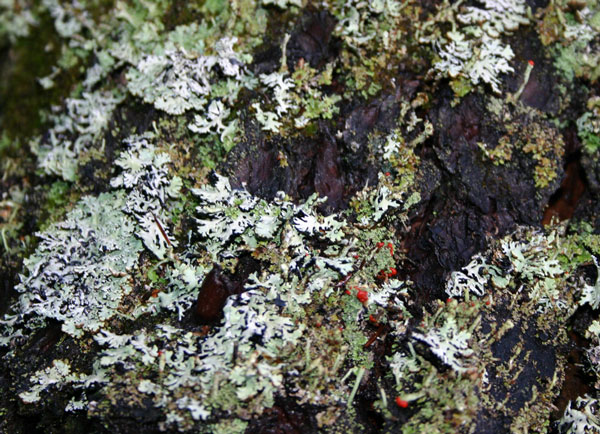Treatment of Alzheimer's with dyes from lichens
A recent study by German scientists said that a red dye from lichen plants could significantly reduce the small toxic protein sequences associated with Alzheimer's disease.
The discovery was published in the Journal of Natural Biological Chemistry.
German scientists say dyes, a compound called orcein , have been used for centuries to dye fabrics and foods related to a substance called O 4 that blocks powdered chains.

Powder chains are toxic and are responsible for neurological disorders and memory impairment in Alzheimer's patients.
Wanker and colleagues discovered a few years ago that Epigallocatechin-3-gallate antioxidants , a natural chemical compound found in green tea, has caused marine toxicity proteins to become non-toxic. With orcein and O4, the researchers discovered another mechanism to excrete toxic protein chains.
Instead of correcting the protein chains, this dye significantly reduces the small protein sequence of toxicity that leads to accelerating the formation of large chains. This is a new mechanism, so far it is difficult to prevent the formation of small toxic protein chains.
According to the results of the study, small chains are thought to be due to the death of neurons, with O4 there must be a new mechanism to treat this disease.
- Lichen survives in space
- What are the dangers of fabric dyeing water?
- 99% of invisible plastic spraying in oceans will be found by ... dyes
- The cure for silver hair does not require dyeing
- Algae, lichens and mushrooms are growing on Red planet?
- Why is Jeans blue?
- Use fluorescent dye to detect cancer cells
- Dyed mulberry leaves change color
- Bacteria are eroding historical sites
- 5 delicious bizarre creatures on Mars
- HIV exposure and treatment
- Successful development of antibodies that treat Ebola
 Green tea cleans teeth better than mouthwash?
Green tea cleans teeth better than mouthwash? Death kiss: This is why you should not let anyone kiss your baby's lips
Death kiss: This is why you should not let anyone kiss your baby's lips What is salmonellosis?
What is salmonellosis? Caution should be exercised when using aloe vera through eating and drinking
Caution should be exercised when using aloe vera through eating and drinking